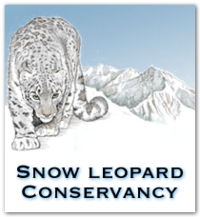The term "big cat" is typically used to refer to any of the five living members of the genus Panthera, namely the tiger, lion, jaguar, leopard, and snow leopard, as well as the non-pantherine cheetah and cougar.

Hemis National Park is a high-elevation national park in Ladakh, India. Globally famous for its snow leopards, it is believed to have the highest density of them in any protected area in the world. It is the only national park in India that is north of the Himalayas, the largest notified protected area in India and is the second largest contiguous protected area, after the Nanda Devi Biosphere Reserve and surrounding protected areas. The park is home to a number of species of endangered mammals, including the snow leopard. Hemis National Park is India's protected area inside the Palearctic realm, outside the Changthang Wildlife Sanctuary northeast of Hemis, and the proposed Tso Lhamo Cold Desert Conservation Area in North Sikkim.
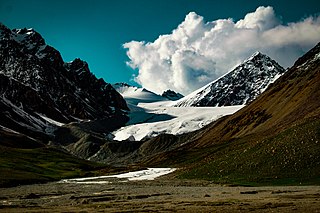
Khunjerab National Park is a national park in Gilgit Baltistan, Pakistan. Khunjerab National Park is Pakistan's third largest national park, and is adjacent to the Taxkorgan Natural Reserve in China.

The Arabian leopard is the smallest leopard subspecies that was described in 1830. It is native to the Arabian Peninsula, where it was widely distributed in rugged hilly and montane terrain until the late 1970s. Today, the population is severely fragmented and thought to decline continuously, with an estimated 45–200 individuals as of 2008 in three isolated subpopulations that are restricted to western Saudi Arabia, Oman and Yemen.
India is home to a large variety of wildlife. It is a biodiversity hotspot with various ecosystems ranging from the Himalayas in the north to the evergreen rainforests in the south, the sands of the west to the marshy mangroves of the east. India lies within the Indomalayan realm and is home to about 7.6% of mammal, 14.7% of amphibian, 6% of bird, 6.2% of reptilian, and 6.2% of flowering plant species. India's forests contain about 500 species of mammals and more than 1300 bird species.
Afghanistan has long been known for diverse wildlife. Many of the larger mammals in the country are categorized by the International Union for Conservation of Nature (IUCN) as globally threatened. These include the snow leopard, Marco Polo sheep, Siberian musk deer, markhor, urial, and the Asiatic black bear. Other species of interest are the ibex, the gray wolf, and the brown bear, striped hyenas, and numerous bird of prey species. Most of the Marco Polo sheep and ibex are being poached for food, whereas wolves, snow leopards and bears are being killed for damage prevention.

Ocean Conservancy is a nonprofit environmental advocacy group based in Washington, D.C., United States. The organization seeks to promote healthy and diverse ocean ecosystems, prevent marine pollution, climate change and advocates against practices that threaten oceanic and human life.

Panthera pardus tulliana is a leopard subspecies native to the Iranian Plateau and surrounding areas encompassing Turkey, the Caucasus, Azerbaijan, Georgia, Armenia, Iraq, Iran, Turkmenistan, Afghanistan and possibly Pakistan. Since 2016, it has been listed as Endangered on the IUCN Red List, as the wild population is estimated at less than 1,000 mature individuals.

The snow leopard, commonly known as the ounce, is a species of large cat in the genus Panthera of the family Felidae. The species is native to the mountain ranges of Central and South Asia. It is listed as Vulnerable on the IUCN Red List because the global population is estimated to number fewer than 10,000 mature individuals and is expected to decline about 10% by 2040. It is mainly threatened by poaching and habitat destruction following infrastructural developments. It inhabits alpine and subalpine zones at elevations of 3,000–4,500 m (9,800–14,800 ft), ranging from eastern Afghanistan, the Himalayas and the Tibetan Plateau to southern Siberia, Mongolia and western China. In the northern part of its range, it also lives at lower elevations.

The Snow Leopard Trust is the largest and oldest organization working solely to protect the endangered snow leopard and its habitat in 12 countries of Central Asia. The trust is a non-profit organization with its headquarters in Seattle, Washington. The present total population of snow leopards in the wild is estimated at between 3,920 and 6,390.
Felidae Conservation Fund (FCF) is a California-based non-profit organization dedicated to preserving wild cats and their habitats. The organization supports and promotes international wild cat research and conservation by collaborating on field research projects, partnering with other environmental organizations, and developing community outreach and education programs.
Kedarnath Wild Life Sanctuary, also called the Kedarnath Musk Deer Sanctuary, is a wildlife sanctuary declared under Wildlife Protection Act, 1972 and located in Uttarakhand, India. Its alternate name comes from its primary purpose of protecting the endangered Himalayan musk deer. Consisting of an area of 975 km2 (376 sq mi), it is the largest protected area in the western Himalayas.It is famous for alpine musk deer, Himalayan Thar, Himalayan Griffon, Himalayan Black bear, Snow Leopard and other flora park and fauna. It is internationally important for the diversity of its flora and fauna.

Panthera Corporation, or Panthera, is a charitable organization devoted to preserving wild cats and their ecosystems around the globe. Founded in 2006, Panthera is devoted to the conservation of the world’s 40 species of wild cats and the vast ecosystems they inhabit. Their team of biologists, data scientists, law enforcement experts and wild cat advocates studies and protects the seven species of big cats: cheetahs, jaguars, leopards, lions, pumas, snow leopards and tigers. Panthera also creates targeted conservation strategies for the world’s most threatened and overlooked small cats, such as fishing cats, ocelots and Andean cats. The organization has offices in New York City and Europe, as well as offices in Mesoamerica, South America, Africa and Asia.
Chang Tang National Nature Reserve lies in the northern Tibetan Plateau. It is the third-largest land nature reserve in the world, after the Northeast Greenland National Park and Kavango-Zambezi Transfrontier Conservation Area, with an area of over 334,000 km2 (129,000 sq mi), making it bigger than 183 countries. Administratively, it lies in Xainza County and Biru County of the Nagqu Prefecture. With the more recently established adjoining reserves listed below there is now a total of 496,000 km2 of connected Nature Reserves, which represents an area almost as large as Spain and bigger than 197 other countries.
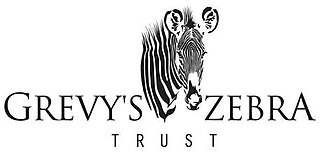
The Grévy's Zebra TrustGZT was founded in 2007 for the protection of the Grévy's Zebras and their habitat. The Conservancy works to engage and incorporate local communities in protecting Grévy's Zebra in Ethiopia and Kenya. GZT uses scouts to collect scientific data, provide security, surveillance, and run education programs. Currently the Grévy's Zebras global population is today about 2,500 down from an estimated 15,000 in the 1970s.
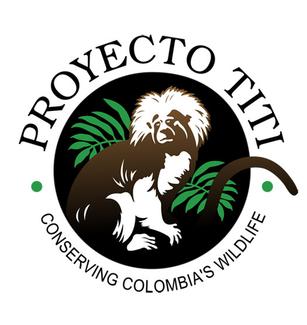
The Proyecto Tití was founded in 1985, to provide information to assist in conservation of the cottontop tamarin and their habitat in the tropical forests of Colombia. Proyecto Tití's programs combine field research, education and community programs. The cotton-top tamarin, is one of the most endangered primates in the world and is found only in North-Western Colombia.

The Saola Working Group (SWG) is a working group of the IUCN Species Survival Commission's Asian Wild Cattle Specialist Group, created in 2006 to protect the saolas and their habitat. The Conservancy works to engage and incorporate local communities in protecting saolas in Annamite Range mountains on the border of Laos and Vietnam. The Saola is one of the most endangered species in the world. Discovered in 1992 it was the first large mammal new to science in more than 50 years and has never been seen by a biologist in the wild. The Saola Working Group is a coalition that includes about 40 experts from the forestry departments of Laos and Vietnam, Vietnam's Institute of Ecology and Biological Resources, Vinh University, biologists and conservationists from Wildlife Conservation Society and the World Wildlife Fund.
The Ewaso Lions Project was founded in 2007 for the protection of lions and their habitat in Northern Kenya. The project works to study and incorporate local communities in helping to protect the lions in the Samburu National Reserve, Buffalo Springs National Reserve and Shaba National Reserve of the Ewaso Nyiro ecosystem in Northern Kenya.
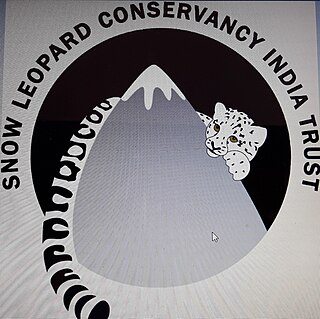
The Snow Leopard Conservancy India Trust (SLC-IT) is a non-profit cat conservation organization for the protection of the snow leopard, its prey species, and its habitat located in Ladakh, India. It primarily focuses on the Indian range of the snow leopard. Apart from conservation and ecological research on the snow leopard, the SLC-IT initiated the Himalayan Homestay Program in 2003.
Tost Tosonbumba Nature Reserve is a nature reserve in Mongolia, dedicated to conserving the snow leopard.
